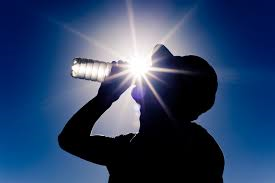07.22.2014
Summer Safety: Beat the Heat
 Summer is here, and that means temperatures around the country are on the rise. As a result, workers in industries like construction, landscaping, mining, and agriculture are exposed to excessive heat on the job, and are also very vulnerable to the heat-related illnesses and deaths that can occur. So what can they do to beat the heat?
Summer is here, and that means temperatures around the country are on the rise. As a result, workers in industries like construction, landscaping, mining, and agriculture are exposed to excessive heat on the job, and are also very vulnerable to the heat-related illnesses and deaths that can occur. So what can they do to beat the heat?
Over the past few years, the Occupational Safety and Health Administration (OSHA) has partnered with several organizations to raise awareness on the hazards workers face when they are exposed to excessive heat on the job. Below are two OSHA initiatives:
- “Water, Rest and Shade” Campaign: In 2011, OSHA launched this campaign to inform employers and workers of the need for water, rest, and shade while working outdoors. To date, the campaign has reached more than 10.7 million people, and uses posters, fact sheets, quick cards, wallet cards and training guides as conduits to reach out to employers and workers.
- Heat Safety Tool App: Recently, OSHA launched an application to help employers and workers better manage heat-related issues on their job sites. The app can be downloaded to any smartphone, and used to calculate the heat index of jobsites based on the temperature and humidity. It also displays a risk level based on the heat index, and provides protective measures that should be taken to protect workers at that risk level. These could include, taking rest breaks, drinking plenty of fluids, adjusting work operations, looking for heat-related illness signs and symptoms, etc.
In addition to OSHA, employers also have the responsibility of protecting their workers from heat-related hazards under the General Duty Clause of the OSH Act.
Employers should have heat-related illness plans in place to protect their workers, that includes providing training for workers to help them better understand what heat illnesses are, who could be affected and how they could be prevented. Examples of heat illnesses include heat rash, heat cramps, heat exhaustion, and heat stroke (a severe form of a heat illness and could result into death if immediate medical attention is not sought).
Workers most susceptible to heat-related illnesses are those who work in hot and humid conditions, and those with lower tolerance to hot and humid conditions. Providing workers with three basic things namely, water, rest and shade could go a long way in preventing heat-related illnesses and deaths. It is also important that employers modify work schedules as necessary, plan for emergencies, and monitor workers for signs and symptoms of heat illnesses.
The statistics for heat-related illnesses and deaths are grim. A look at OSHA’s interactive map on heat-related deaths nation-wide paints a perfect picture of my assertion. While OSHA continues to try to raise awareness about this issue, it is going to take the collective efforts of employers and employees to alleviate this problem, as well. Educate yourself, and please join us as we beat the heat!
If you enjoyed this blog article, please subscribe to stay up to date on the latest industry news from our experts at Faith Technologies.



